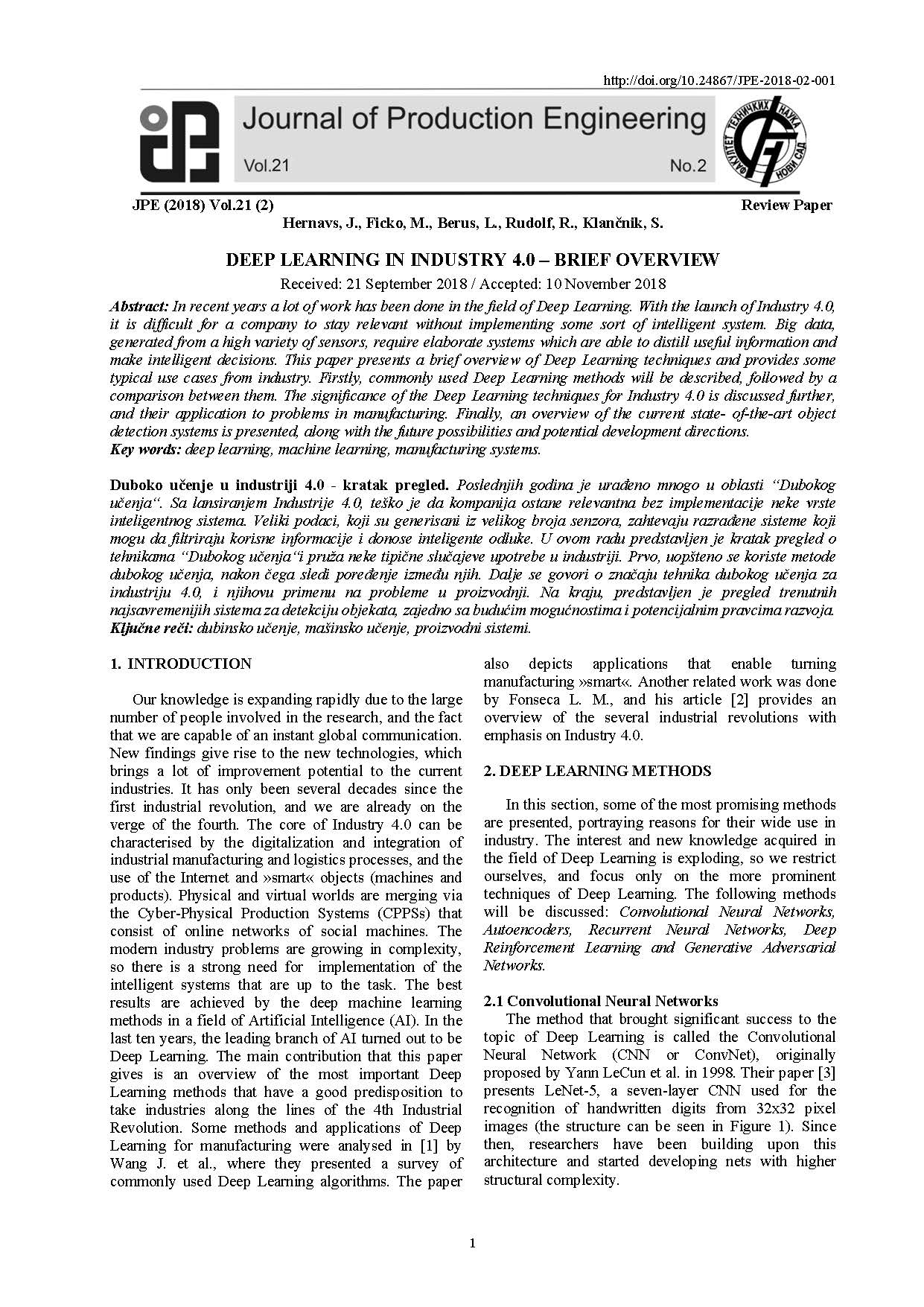
Published 2018-12-30
abstract views: 501 // FULL TEXT ARTICLE (PDF): 314
Keywords
- deep learning,
- machine learning,
- manufacturing systems
How to Cite
Copyright (c) 2023 Journal of Production Engineering

This work is licensed under a Creative Commons Attribution 4.0 International License.
Abstract
In recent years a lot of work has been done in the field of Deep Learning. With the launch of Industry 4.0, it is difficult for a company to stay relevant without implementing some sort of intelligent system. Big data, generated from a high variety of sensors, require elaborate systems which are able to distill useful information and make intelligent decisions. This paper presents a brief overview of Deep Learning techniques and provides some typical use cases from industry. Firstly, commonly used Deep Learning methods will be described, followed by a comparison between them. The significance of the Deep Learning techniques for Industry 4.0 is discussed further, and their application to problems in manufacturing. Finally, an overview of the current state- of-the-art object detection systems is presented, along with the future possibilities and potential development directions.

